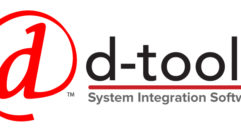
Expert Viewpoint: Educators, Meet Integrators
Sep 1, 2008 12:00 PM,
By Pat Thompson and Bill Cyree
Points to consider when picking systems integrators for educational installations.

The studio at California State University San Marcos—which was designed, installed, and implemented by TV Magic—is equipped with three Hitachi Z400W studio cameras, a Thomson Grass Valley Kayak production switcher, a Yamaha DM1000 audio mixer, and a Panasonic AJ-SD93 DVCPRO recorder.
Today, the education market is taking greater advantage of AV technology than ever before — using it as a training tool; as a means of analyzing and preserving students’ work; and as a platform to make better use of multimedia in the classroom, lecture hall, or administrative meeting area. Whereas the benefits of working with state-of-the-art AV systems may be obvious, the design and implementation of new systems or facilities is less clear — requiring both experience and expertise. Fortunately, high schools, colleges, and universities aren’t the only institutions recognizing that knowledge is power.
Systems integrators for broadcast and AV systems specialize in providing customers with solutions that offer the best fit for their operational and budgetary needs. In doing so, systems integrators perform research and conduct interviews with users, administrators, and purchasing personnel — subsequently using this knowledge to assess the organization’s needs and limitations and design a system accordingly. With an in-depth understanding of the requirements of design and installation, the systems integrator can help an educational institution put smart, effective AV systems in place and also meet requirements unique to schools and universities such as student accessibility and the integration of assistive-listening systems.
The systems integrator typically performs end-to-end services from design through implementation, installation, commissioning, and testing — offering project-management services throughout and ongoing support after the sale and installation. In the education market, the systems integrator fulfills an important role early on by addressing the expectations of the many different groups involved in the project. Quite often, it’s not the end user who selects the product, and a third staff member may oversee purchasing. It is also quite possible that none of the individuals involved have the technical knowledge to explain the solution they want. As a result, the systems integrator plays a key role in finding a viable solution for the user and the environment — as well as in maintaining communication about project goals with all parties throughout the planning, design, and installation phases. Working with the right systems integrator can make all the difference in the success or failure of an AV installation.
SUCCESSFUL TRACK RECORD
In seeking out a systems integrator, the first step is to learn about prospective companies’ past successes. An integrator with a strong history of completing similar projects for similar clients likely will have gained the experience and expertise needed to perform another such job. Each type of AV installation has its own needs — whether in broadcast, postproduction, corporate, or education — and it’s rarely desirable to be a first customer in any area or application. Although no two installations are the same, the systems integrator should be able to understand the fundamental drivers or objectives for the project and provide similar examples from past work. Consider not only the types of installation the company has completed, but also the scale and complexity of those installations. Is the integrator equipped with the staff and experience to take on a particular project?
Recommendations and references from past customers are one sure way to get an idea of the company’s competency, ability to deal with challenges, responsiveness, and general approach to its clients and their projects. Go beyond the testimonial to learn about what working with the integrator on a daily basis would be like. It is important to find out about the system integrator’s ability to work well not only with the customer, but also with other professionals typically involved in a project.
The earlier the integrator gets involved in an installation, whether it’s a new build or a retrofit, the better. To ensure that AV needs are addressed properly from the start, the integrator should be comfortable working alongside architects and contractors even before ground is broken. The relationships that the integrator has developed with leading vendors of AV equipment are equally important as a project unfolds, and they also say a great deal about the company and its ability to deliver a suitable and lasting solution.
1
Expert Viewpoint: Educators, Meet Integrators
Sep 1, 2008 12:00 PM,
By Pat Thompson and Bill Cyree
Points to consider when picking systems integrators for educational installations.

The server room at CSU San Marcos houses Apple Xsan servers, a Thomson Grass Valley Concerto router, and Miranda terminal gear.
COMMITMENT TO EXCELLENCE
While past performance tends to be a good predictor of future success, it is still worthwhile to ask prospective integrators about ongoing training and certification. Is the company properly licensed, and are its engineers involved in courses, conferences, or industry organizations that offer opportunities for continuing technical education or skills development?
Ask, too, about the company’s approach to project management. Does the integrator follow a proven methodology in managing every step of the installation — from planning through to training, commissioning, and support? Is everyone at the company aware of and working according to the same overall plan? Find out how the company works with its clients to identify a solution, create a project roadmap and timeline, and turn those plans into a reality. Ask references about how well the customer is involved and educated throughout the installation to ensure that the end result truly does meet the objectives originally established for the project.
Generally speaking, a systems-integration project comprises several phases — beginning with a fact-finding period during which the integrator gets to know the client’s needs through meetings and discussions with all of the key parties involved. The challenge lies in addressing the educator’s expectations, finding a viable solution for the user and environment, and ensuring that decision-makers and purchasing staff are on board.
Today’s AV installations demand that the integrator be able to think beyond four walls and find ways to implement flexible systems that offer value in the increasing number of multifunction rooms being used within educational institutions. It is entirely reasonable to expect the systems integrator to create an outline of the expected workflow — complete with technical requirements such as the formats being used, how media will be transported and stored, who will need access to it and where, and the different ways in which that media will be used in the near and long term. The systems integrator should address these issues, among others, in the process of getting the project done right.
THE RIGHT SOLUTION
The primary role of the systems integrator is the creation of an AV solution that incorporates the best combination of products — according to cost, features, and functionality — for an educator’s needs. The purchase of the wrong equipment is a tremendous waste of the client’s time and money. To avoid this possibility, the integrator should be able to leverage its fact-finding and needs analysis to offer a variety of options from different vendors, with supporting information to help its customer understand the pros and cons of each component, what it adds to the installation, and where carefully considered compromises or tradeoffs could be made in order to stay within budgetary constraints. Although the integrator may prefer certain types of products from particular vendors, the company should be able to supply quality equipment from a broad range of manufacturers as the needs of the project and customer demand.
Ask about how, once the proper equipment is identified, the installation will come together. Effective project management is key to ensuring that equipment from various vendors and suppliers arrives on time and that the facility is structurally ready for the installation of gear. This process should be documented continually by the integrator. Even the smallest changes in the original plan can cause problems down the road if they are left out of project documentation. Make sure that a comprehensive and up-to-date record of the installation will be provided following the completion of the project. Without this information, future fixes or upgrades by the same or a different integrator will be more difficult and more costly.
SUPPORTING THE INSTALL
AV installations tend to require significant investment of time, energy, and often money. The systems integrator must be prepared to provide a solution worth this cost and also to support the customer and installation after the project has been finished. Documentation throughout the project is vital, and the integrator should maintain and provide for its customer an AutoCAD model of the installation, as well as a soft copy on DVD or CD.
Because faculty and staff at educational institutions range in their competence with AV technologies, the integrator also should incorporate training into its services. How extensive this training will be is up to the customer and the integrator, but it is an element that certainly should be discussed at the outset. When a rotating group of users requires training, such as when students are responsible for operating AV equipment, the best solution often is for the integrator to train a supervisor from the school’s staff — who, in turn, can then train other users within the facility.
Actual maintenance of the system is another issue that requires attention as systems integrators bid for a job. Establish the level of service that will be provided after the installation, and get details about how equipment will be covered under warranty, repaired, or replaced. In the event of any problems, neither the integrator nor the educator should be surprised by the other’s expectations.
In the end, the project should allow staff and students at educational institutions to use AV technology as a tool without being overwhelmed by it. An effective systems integrator will ensure — even for the simplest installation — that there is ongoing communication with faculty, administrators, the architect, and the contractor, with the customer’s workflow objectives clearly outlined throughout the project. A successful AV installation demands commitment from all parties, and if the client and integrator remain dedicated to their roles in the project, the end product will enhance the experience of students and educators in expressing, sharing, and discussing new ideas and information.
Pat Thompson is senior vice president of engineering for TV Magic. Thompson has been in the video industry for more than 20 years. Bill Cyree is the lead design engineer of the AV division for TV Magic.
2










